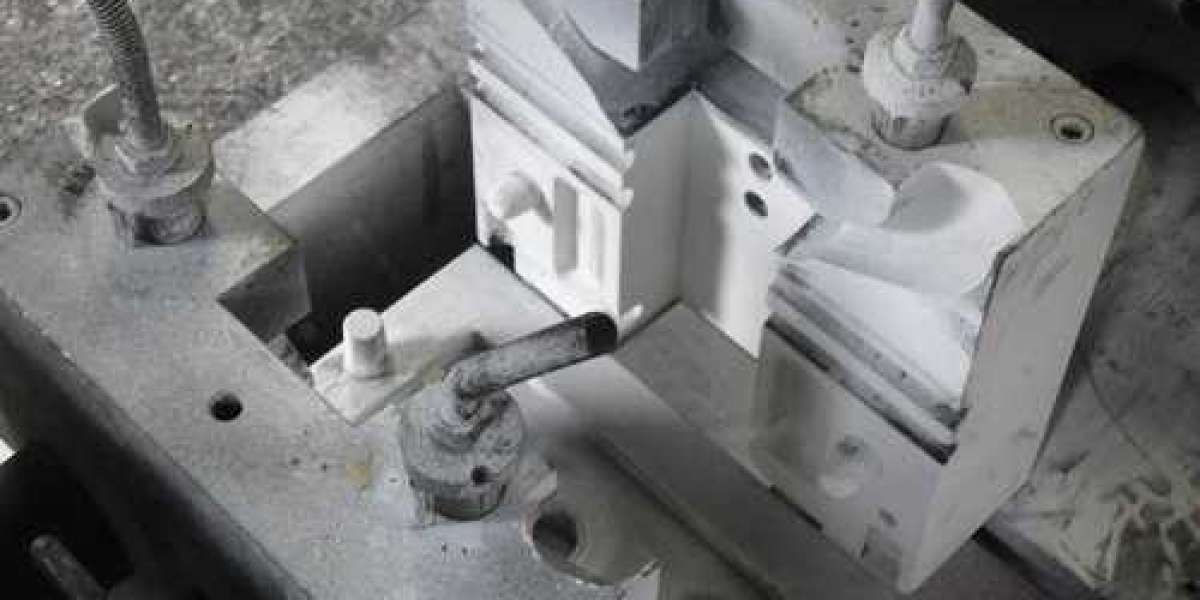Modern die-casting companies strive to continuously improve the quality of their parts, adapt them to the needs of domestic and international markets, and identify the factors that are causing die-casting technology to lag behind the development of manufacturing.
Throughout the modern industrial world, these are all topics that are frequently brought up for discussion. It is planned to have a preliminary discussion of the issues prior to the actual meeting.
Important to note, in particular, is the fact that temperature control of the mold can have a significant impact on both temperatures of the alloy liquid and on the fluidity of the alloy liquid, as well as filling time and flow state of the alloy liquid during the filling process. This factor has an effect on all of the properties of the alloy liquid, including its cooling rate, crystallization state and order, as well as the shrinkage stress it experiences during cooling.
if the die-casting part is overheated, surface depressions or bubbles will appear; if the die-casting part is underheated, the surface will be broken by the high-speed liquid flow, resulting in surface defects on the casting and an increase in shrinkage stress on the casting, resulting in cracks on the surface if it is overheatedThe proper mold temperature must be maintained in order to maximize the life of the mold die casting mould and the efficiency of the manufacturing process.
Early cracking and deformation of the mold material can occur if the temperature gradient of the mold changes dramatically during the molding process. If the resulting stress state and frequent stress alternation are not brought down to an acceptable level, the mold will crack and deform prematurely, resulting in the mold cracking and deforming prematurely.
Two of the most significant factors that influence the temperature of the mold are as follows:
1) When it comes to the casting process, a number of variables such as the pouring temperature, the amount of liquid poured, the heat capacity of the alloy liquid, the volume and structure of the mold, as well as the thermal conductivity of the alloy liquid, all play a role.
The design and arrangement of the mold gating system and overflow tank, as well as the adjustment of the thermal equilibrium state during the manufacturing process, are among the most important considerations.
Section 4 goes into great detail about the method and medium for mold lubrication, as well as the temperature and cooling conditions, all of which are critical considerations in the manufacturing process.
The impact of mold temperature on die casting performance will be discussed in greater depth later in this section of the document.
As a result of this, the mechanical properties of the material are influenced in some way.
Increased temperature of the mold, when done correctly, can aid in improving the filling conditions as well as the mechanical properties of the cast iron casting that is produced. Because of this, if the amount of heat generated by the mold is increased to an excessive level, the cooling rate of the alloy liquid will be slowed, resulting in a thinned-out and coarser-textured fine-grained layer on the casting and a reduction in the overall strength of the casting. Figure 1 depicts a relationship between mold temperature and mechanical properties in die castings of aluminum alloy (ZL105), which can be seen in the graph die casting aluminum. Figure 1 depicts how aluminum alloys lose their tensile strength when the mold temperature exceeds 250 degrees Celsius, whereas the value of elongation decreases gradually when the mold temperature is less than 150 degrees Celsius (Figure 2). Figure 2 depicts how the value of elongation decreases gradually when the mold temperature is less than 150 degrees Celsius. When the mold temperature is less than 150 degrees Celsius, as shown in Figure 2, the value of elongation decreases gradually as time passes.
While die casting mold temperature machines are more expensive than traditional die casting technology, they have several advantages over traditional die casting technology. These are the advantages of die casting mold temperature machines:

One advantage of die casting with a special mold temperature machine is that it can completely eliminate or significantly reduce the porosity of the die castings, which is a desirable property in die castings.
Possessing the ability to manufacture products with extremely high levels of efficiency while also manufacturing products with exceptionally high levels of product qualityIt is not only possible to improve the accuracy of the casting's dimensions through the use of a short solidification time, a low solidification temperature, and a small solidification shrinkage, but it is also possible to increase the productivity of the finished product by a factor of two or three depending on the material used in the casting.
The reduction of production costs while also conserving resources is a third objective.
It is necessary to use aluminum die casting in order to manufacture the parts for this application.
Aluminum is the most important raw material in the production of aluminum products, and it is also the most expensive. When the aluminum undergoes heat treatment, it transforms into a liquid state, which allows it to be injected into the mold of a die-casting machine and formed by die-casting, which is a critical process in the production of aluminum die-casting components. In addition to its outstanding fluidity and plasticity, aluminum is a highly versatile material that is widely used in the die-casting industry to manufacture dies. As a result of these characteristics, aluminum is widely used in the die-casting industry to manufacture dies. As a result of aluminum parts' attractive appearance and the fact that aluminum is a low-cost metal, the company's manufacturing costs are reduced, resulting in increased profits for the organization.
During the casting of an aluminum alloy, a die is utilized.
Alloys and aluminum are among the most widely used raw materials in the manufacturing industry, accounting for a third of total production. It was possible to achieve a high gloss finish on the aluminum that was used in this project by die-casting the aluminum. Following the completion of the die-casting molding process, it is necessary to grind the aluminum die-casting factory to a smooth finish . During the grinding process, nitric acid is incorporated into the aluminum die-casting in order to prevent corrosion and improve the grinding brightness. Die-cast aluminum that has undergone additional processingThe use of aluminum alloy die-casting is widespread in a variety of industries, including electronics, motors, and other mechanical applications. When compared to other materials, aluminum alloy die-casting offers superior performance and greater toughness. Additionally, as previously stated, it is a crucial component of mechanical parts and components.








